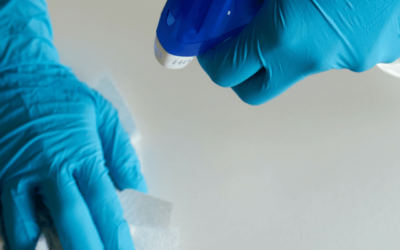Over the past five years, the UK has seen a concerning trend of contamination of food products with pieces of rubber and plastic.
Official figures and reports have highlighted numerous incidents where foreign materials have been found within a range of various food items, raising serious concerns about the safety and quality of the food supply chain.
Official Figures and Incidents.
According to official statistics, the Food Standards Agency (FSA) reported a significant increase in the number of contamination cases involving rubber and plastic in food products across the UK in recent years.
Between 2018 and 2022, the FSA recorded over 500 incidents of such contamination, marking a concerning escalation of the issue.
These included product recalls from Lidl, Tesco and Sainsburys for yoghurt and pasta products, plus Oatibix flakes from Weetabix. There has also been cases reported relating to Walkers Crisps, Maltesers, Countrylife Spread and Mr Kipling mince pies.
In 2020, Nestle recalled batches of Ski Yoghurt after small pieces of black rubber were discovered in some packs.
In 2019, a high-profile case raised alarm in the UK when small pieces of rubber were discovered in sandwiches sold by a major supermarket chain. This incident created significant media attention and prompted an investigation into the quality control practices of food manufacturers and suppliers. Subsequently, stricter regulations were introduced to address the issue and prevent similar occurrences in the future.
Causes and Consequences.
Several factors can contribute to the contamination of food products with rubber and plastics.
One primary cause of contamination is when these materials wear out, break or fall off from machinery and equipment used during food processing and packaging. Over time, worn-out parts or maintenance issues can lead to the shedding of rubber or plastic fragments, which can inadvertently contaminate the food being processed.
Furthermore, inadequate quality control measures within the manufacturing and processing systems pose a significant risk.
Insufficient monitoring and checking of food products can allow contaminated products to reach consumers, compromising their safety and well being.
The Impact on the Food Industry and Consumers.
The recurring incidents of rubber and plastic contamination has far-reaching consequences for both the food industry and consumers.
Food manufacturers and retailers face reputational damage along with large financial losses due to product recalls, litigation and decreased consumer trust.
From a consumer perspective, the contamination of food products can pose serious health risks.
Ingesting rubber or plastic particles can lead to choking hazards, digestive issues and potential long-term health complications.
Prevention of Contamination
To prevent plastic and rubber contamination in food products, manufacturers and operators need to follow the regulations and guidelines for food contact materials (FCM’s). FCM’s are materials and articles that are expected to come into contact with foods or to transfer their constituents to food.
Regulations and standards are set by recognized bodies such as FDA, or EU regulations such as EU 1935/2004 etc.
The FSA advises manufacturers and operators to implement HACCP principles and procedures to ensure food safety.
HACCP stands for Hazard Analysis and Critical Control Points. It is a system that identifies, evaluates and controls hazards that are significant for food safety.
One of the ways to reduce the risk of plastic and rubber contamination is to use metal detectable materials that can be easily spotted by metal detection or X-ray machines.
Metal detectable materials are made from special elastomer compounds that contain metal particles or additives that make them visible to detection systems.
They can also come in a blue colour for easy visual identification.
Metal detectable materials are available for various applications such as gaskets, seals, O rings and extrusions, and in custom solutions to allow provision into a wide range of applications and requirements within food manufacturing and processing systems.
Implementing metal detectable seals can offer many benefits for food processing applications:
- They help you comply with the regulation (EC) 852/2004 Article 5 that requires manufacturers and operators to implement HACCP principles and procedures to ensure food safety
- They can extend the lifetime and performance of your equipment by providing durable and resilient sealing solutions that can withstand high temperatures, pressures and cleaning agents etc.
- The can help protect your product quality, customer satisfaction and brand reputation by reducing the chance of recalls and complaints due to contamination.




